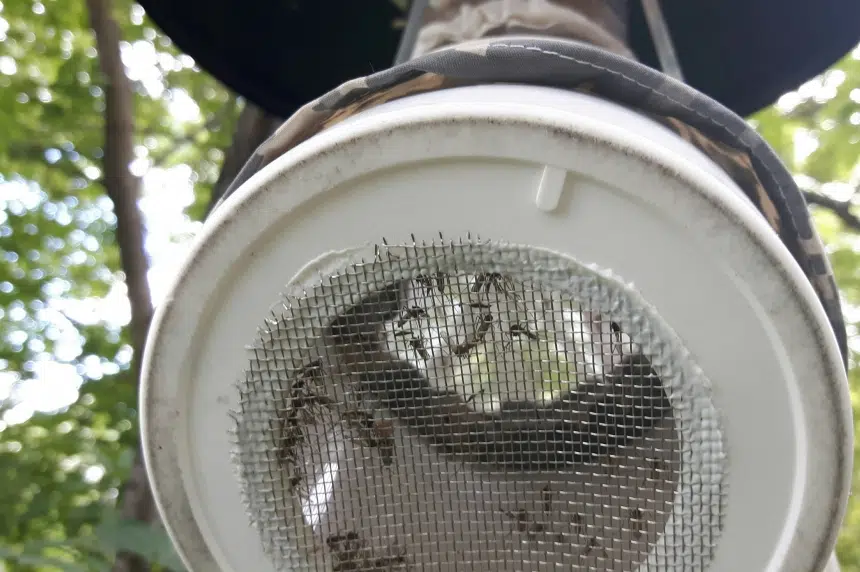SaskHealth is reminding people to cover up and spray down to keep the mosquitoes away because the Culex tarsalis mosquito that can carry West Nile virus is starting to get active again.
Pest mosquitoes tend to drop in numbers as the weather gets hotter and dryer, but the Culex tarsalis populations tend to spike in July and August.
Phil Curry is the West Nile coordinator for Saskatchewan and he said so far, none of the mosquitoes caught in traps have tested positive for the virus, but it’s still early in the season.
Right now the risk level for contracting West Nile is still low in southern Saskatchewan with very few of the Culex tarsalis mosquitoes caught in the 33 traps that the province uses for monitoring across different regions. For up to date information on the risk level in your area, you can check out the Saskatchewan Health website.
There have been no human cases of West Nile recorded in the province this year, although Curry notes that they do monitor nearby regions and one human case has popped up in South Dakota. Typically the human tracking is delayed because the symptoms can present up to a month after the patient is bitten by an infected mosquito.
The majority of people who contract West Nile from a mosquito do not actually get sick. About 20 per cent of people who are infected by West Nile virus will develop symptoms like a fever, body aches, vomiting, diarrhea and a rash, but will recover on their own.
One per cent of people who get West Nile may contract the more dangerous neuroinvasive strain of the virus which can cause swelling of the brain. The symptoms of West Nile neuroinvasive disease include a high fever, stiffness in the neck, coma, tremors, seizures or paralysis.
Since the peak years in 2003 and 2007, Saskatchewan has recorded very few human cases of the severe form of West Nile virus. Last year there were no human cases in the province.











